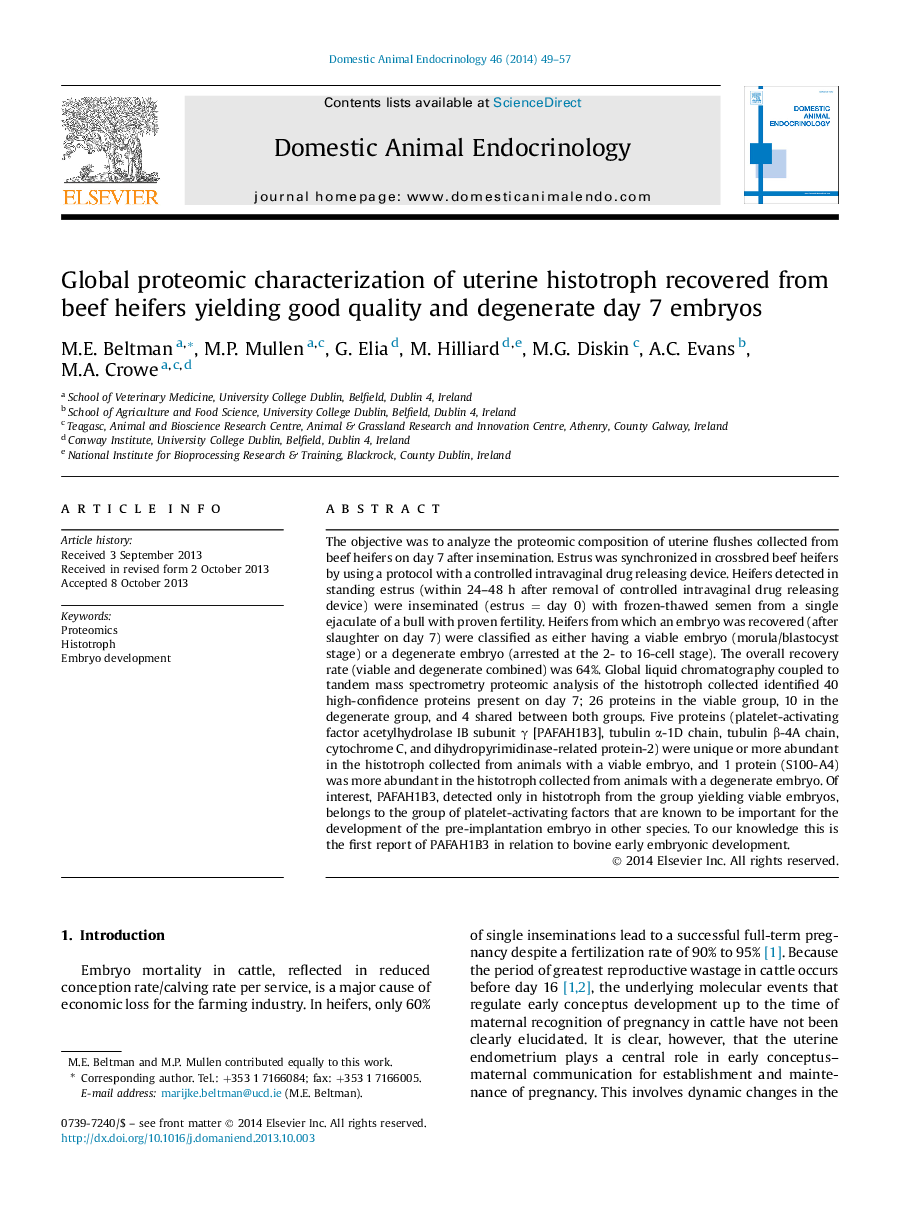| Article ID | Journal | Published Year | Pages | File Type |
|---|---|---|---|---|
| 2393545 | Domestic Animal Endocrinology | 2014 | 9 Pages |
The objective was to analyze the proteomic composition of uterine flushes collected from beef heifers on day 7 after insemination. Estrus was synchronized in crossbred beef heifers by using a protocol with a controlled intravaginal drug releasing device. Heifers detected in standing estrus (within 24–48 h after removal of controlled intravaginal drug releasing device) were inseminated (estrus = day 0) with frozen-thawed semen from a single ejaculate of a bull with proven fertility. Heifers from which an embryo was recovered (after slaughter on day 7) were classified as either having a viable embryo (morula/blastocyst stage) or a degenerate embryo (arrested at the 2- to 16-cell stage). The overall recovery rate (viable and degenerate combined) was 64%. Global liquid chromatography coupled to tandem mass spectrometry proteomic analysis of the histotroph collected identified 40 high-confidence proteins present on day 7; 26 proteins in the viable group, 10 in the degenerate group, and 4 shared between both groups. Five proteins (platelet-activating factor acetylhydrolase IB subunit γ [PAFAH1B3], tubulin α-1D chain, tubulin β-4A chain, cytochrome C, and dihydropyrimidinase-related protein-2) were unique or more abundant in the histotroph collected from animals with a viable embryo, and 1 protein (S100-A4) was more abundant in the histotroph collected from animals with a degenerate embryo. Of interest, PAFAH1B3, detected only in histotroph from the group yielding viable embryos, belongs to the group of platelet-activating factors that are known to be important for the development of the pre-implantation embryo in other species. To our knowledge this is the first report of PAFAH1B3 in relation to bovine early embryonic development.
